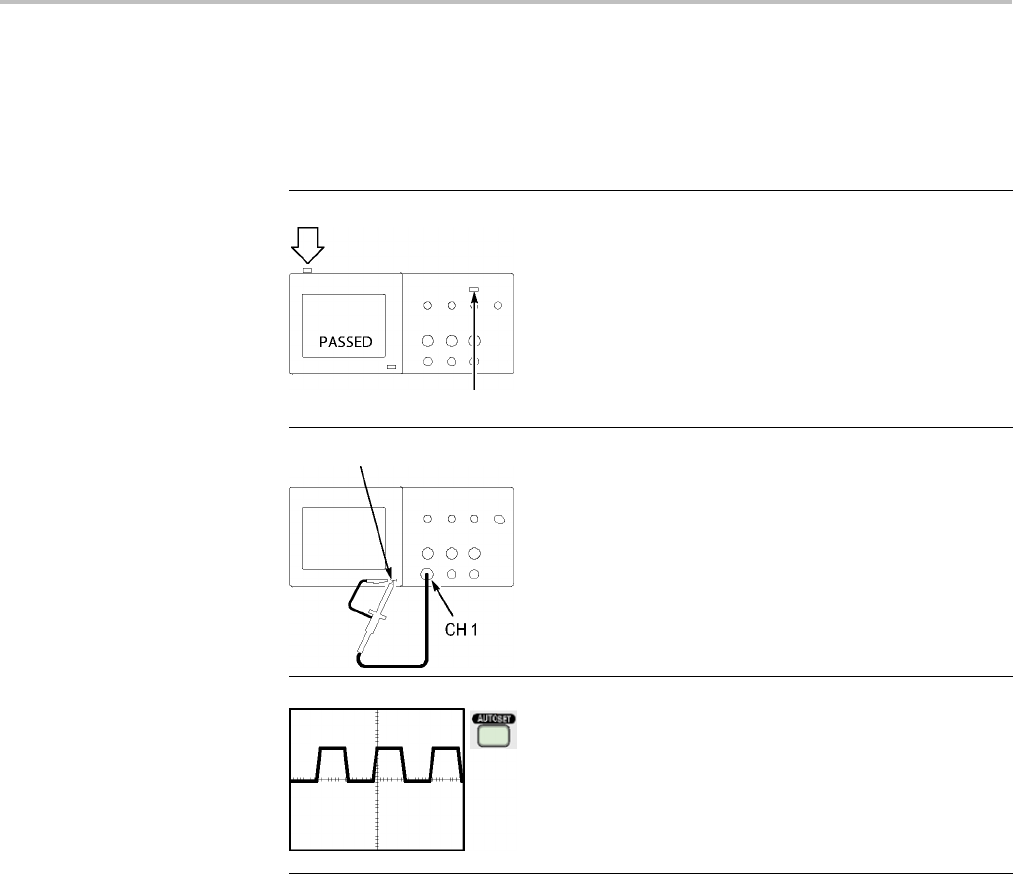User manual
Table Of Contents
- toc
- General safety summary
- Compliance Information
- Preface
- Getting Started
- Operating Basics
- Understanding Oscilloscope Functions
- Application Examples
- Taking Simple Measurements
- Using Autorange to Examine a Series of Test Points
- Taking Cursor Measurements
- Analyzing Signal Detail
- Capturing a Single-Shot Signal
- Measuring Propagation Delay
- Triggering on a Specific Pulse Width
- Triggering on a Video Signal
- Analyzing a Differential Communication Signal
- Viewing Impedance Changes in a Network
- Data Logging
- Limit Testing
- Math FFT
- USB Flash Drive and Device Ports
- USB Flash Drive Port
- File Management Conventions
- Saving and Recalling Files With a USB Flash Drive
- Using the Save Function of the Print Front Panel Button
- USB Device Port
- Installing the PC Communications Software on a PC
- Connecting to a PC
- Connecting to a GPIB System
- Command Entry
- Connecting to a Printer
- Printing a Screen Image
- Reference
- Appendix A: Specifications
- Appendix B: TPP0101 and TPP0201 Series 10X Passive Probes Inform
- Appendix C: Accessories
- Appendix D: Cleaning
- Appendix E: Default Setup
- Appendix F: Font Licenses

Getting Started
Functional Ch
eck
Perform this functional check to verify that your oscilloscope is operating
correctly.
ON/OFF button
1. Power on the oscilloscope.
Push the Default Setup button.
The default
Probe option attenuation setting is
10X.
Default Setup button
PROBE COMP
2. Connect the TPP0101/TP0201 probe to channel
1ontheo
scilloscope. To do this, align the slot
in the probe connector with the key on the CH 1
BNC, push to connect, and twist to the right to
lock th
e probe in place.
Connect the probe tip and reference lead to the
PROBE COMP terminals.
3. Push t
he AutoSet button. Within a few seconds,
you should see a square w ave in the display of
about 5V peak-to-peak at 1 kHz.
Push t
he 1 channel 1 menu button on the front
panel twice to remove channel 1, push the 2
channel 2 menu button to display channel 2, and
repe
at steps 2 and 3. For 4-channel models,
repeat for 3 and 4.
4 TBS1000 Series Oscilloscopes User Manual










